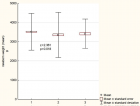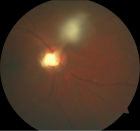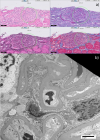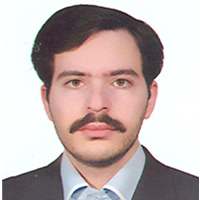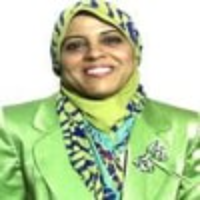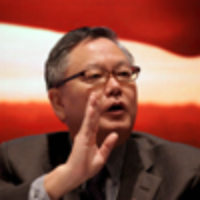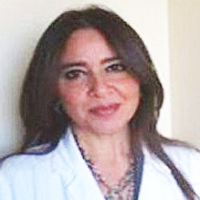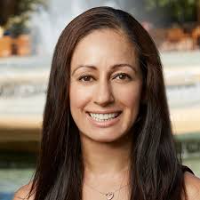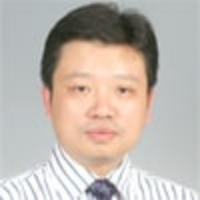Abstract
Case Report
Clinical Case of Successful Therapy for the Patient with Autism by use of Fetal Stem Cells
AA Sinelnyk*, SG Shmyh, IG Matiyashchuk, MO Klunnyk, MP Demchuk, OV Ivankova, OO Honza, IA Susak, MV Skalozub, DV Vatlitsov and KI Sorochynska
Published: 19 August, 2024 | Volume 8 - Issue 1 | Pages: 048-053
More than 60 million persons all over the world are living with the diagnosis of “Autism”, in accordance with the UNO. According to the WHO, almost every hundredth child is a sufferer of ASD. Such figures emphasize globalization of the problem, and its impact not only on the child’s family but also on the economies of entire countries.
Autism diagnosis is difficult and based on the general symptoms in kids. Today, the neuroimaging techniques (methods of functional Magnetic Resonance Imaging (MRI) and MRI tractography), Electroencephalography (EEG), evoked cognitive potentials and dynamic monitoring of the results help with an objective evaluation of stem cell therapy.
Treatment options in modern pharmacology and rehabilitation psychotherapy for ASD kids are limited. Therapy methods do not ensure a full integration into social life and personality awareness. To alleviate likely problems in society, different therapeutic approaches exist that might reduce the manifestation of the various autism symptoms. FSC therapy is one such innovative method that has recently become enough popular.
We inform about the clinical case of successful treatment using fetal stem cells for a child with autism followed by the period of 1-year follow-up showing significant clinical results. Over one year, the positive changes that had been proved by the ATEC questionnaire, the EEG results, and MRI-tractography were noted by the patient’s family. As emphasized in the clinical case report, fetal stem cell therapy is a promising and efficient treatment for children with autism. All that was sufficiently confirmed by the results acquired because we saw an overall improvement in this patient.
Read Full Article HTML DOI: 10.29328/journal.jsctt.1001043 Cite this Article Read Full Article PDF
Keywords:
Attention span and concentration; Autism spectrum disorders; Cause-and-effect relationships; Receptive-expressive speech disorders; Tractography
References
- Bradstreet JJ, Sych N, Antonucci N, Ivankova O, Matyashchuk I, Demchuk M, et al. Efficacy of fetal stem cell transplantation in autism spectrum disorders: an open-labeled pilot study. Cell Transplant. 2014;23(1 Suppl):105-112. Available from: https://doi.org/10.3727/096368914x684916
- Salari N, Rasoulpoor S, Rasoulpoor S, Shohaimi S, Jafarpour S, Abdoli N, et al. The global prevalence of autism spectrum disorder: a comprehensive systematic review and meta-analysis. Ital J Pediatr. 2022;48(1):112. Available from: https://doi.org/10.1186/s13052-022-01310-w
- Qu J, Liu Z, Li L, Zou Z, He Z, Zhou L, et al. Efficacy and safety of stem cell therapy in children with autism spectrum disorders: a systematic review and meta-analysis. Front Pediatr. 2022;10:897398. Available from: https://doi.org/10.3389/fped.2022.897398
- Rosner M, Schipany K, Hengstschläger M. The decision on the “optimal” human pluripotent stem cell. Stem Cells Transl Med. 2014;3:553-559. Available from: https://stemcellres.biomedcentral.com/articles/10.1186/s13287-023-03379-4
- Ishii T, Eto K. Fetal stem cell transplantation: past, present, and future. World J Stem Cells. 2014;6(4):404-420. Available from: https://doi.org/10.4252%2Fwjsc.v6.i4.404
- Larijani B, Aghayan HR, Goodarzi P, Arjmand B. GMP-grade human fetal liver-derived mesenchymal stem cells for clinical transplantation. Methods Mol Biol. 2014;1216:123-133. Available from: https://doi.org/10.1007/7651_2014_101
- Rosner M, Horer S, Feichtinger M, Hengstschläger M. Multipotent fetal stem cells in reproductive biology research. Stem Cell Res Ther. 2023;14:157. Available from: https://doi.org/10.1186/s13287-023-03379-4
- Brands K, Colvin E, Williams LJ, Wang R, Lock RB, Tuch BE. Reduced immunogenicity of first-trimester human fetal pancreas. Diabetes. 2008 Mar;57(3):572-580. Available from: https://doi.org/10.2337/db07-0720a
- Palmer C, Coronel R, Liste I. Treatment of Parkinson’s disease using human stem cells. J Stem Cell Res Med. 2016;1(3):71-77. Available from: http://dx.doi.org/10.15761/JSCRM.1000113
- Genchi A, Brambilla E, Sangalli F, Radaelli M, Bacigaluppi M, Furlan R, et al. Neural stem cell transplantation in patients with progressive multiple sclerosis: an open-label, phase 1 study. Nat Med. 2023;29:75-85. Available from: https://doi.org/10.1038/s41591-022-02097-3
- Levi AD, Anderson KD, Okonkwo DO, Park P, Bryce TN, Kurpad SN, et al. Clinical outcomes from a multi-center study of human neural stem cell transplantation in chronic cervical spinal cord injury. J Neurotrauma. 2019;36(6):891-902. Available from: https://doi.org/10.1089/neu.2018.5843
- Ottoboni L, von Wunster B, Martino G. Therapeutic plasticity of neural stem cells. Front Neurol. 2020;11:48. Available from: https://doi.org/10.3389/fneur.2020.00148
- De Gioia R, Biella F, Citterio G, Rizzo F, Abati E, Nizzardo M, et al. Neural stem cell transplantation for neurodegenerative diseases. Int J Mol Sci. 2020;21(9):3103. Available from: https://doi.org/10.3390/ijms21093103
- Zhang G, Zhu Z, Wang H, Yu Y, Chen W, Waqas A, et al. Exosomes derived from human neural stem cells stimulated by interferon gamma improve therapeutic ability in ischemic stroke model. J Adv Res. 2020;24:435-445. Available from: https://doi.org/10.1016/j.jare.2020.05.017
- Kahroba H, Ramezani B, Maadi H, Sadeghi MR, Jaberie H, Ramezani F. The role of Nrf2 in neural stem/progenitor cells: from maintaining stemness and self-renewal to promoting differentiation capability and facilitating therapeutic application in neurodegenerative disease. Ageing Res Rev. 2021;65:101211. Available from: https://doi.org/10.1016/j.arr.2020.101211
- Ahmadian-Moghadam H, Sadat-Shirazi M, Zarrindast MR. Therapeutic potential of stem cells for treatment of neurodegenerative diseases. Biotechnol Lett. 2020;42:1073-1101. Available from: https://doi.org/10.1007/s10529-020-02886-1
- Nair S, Rocha-Ferreira E, Fleiss B, Nijboer CH, Gressens P, Mallard C, et al. Neuroprotection offered by mesenchymal stem cells in perinatal brain injury: role of mitochondria, inflammation, and reactive oxygen species. J Neurochem. 2021;158(1):59-73. Available from: https://doi.org/10.1111/jnc.15267
- Amici SA, Dong J, Guerau-de-Arellano M. Molecular mechanisms modulating the phenotype of macrophages and microglia. Front Immunol. 2017;8:1520. Available from: https://doi.org/10.3389/fimmu.2017.01520
- Okano H. Neural stem cells and strategies for the regeneration of the central nervous system. Proc Jpn Acad Ser B Phys Biol Sci. 2010;86(4):438-450. Available from: https://doi.org/10.2183%2Fpjab.86.438
- Al Backer NB. Correlation between Autism Treatment Evaluation Checklist (ATEC) and Childhood Autism Rating Scale (CARS) in the evaluation of autism spectrum disorder. Sudan J Paediatr. 2016;16(1):17-22. Available from: https://pubmed.ncbi.nlm.nih.gov/27651549/
- Aoki Y, Abe O, Nippashi Y, Yamasue H. Comparison of white matter integrity between autism spectrum disorder subjects and typically developing individuals: a meta-analysis of diffusion tensor imaging tractography studies. Mol Autism. 2013;4(1):25. Available from: https://doi.org/10.1186/2040-2392-4-25
- Zong F, You Z, Zhou L, Deng X. Language function of the superior longitudinal fasciculus in patients with arteriovenous malformation as evidenced by automatic fiber quantification. Front Radiol. 2023;3:1121879. Available from: https://doi.org/10.3389%2Ffradi.2023.1121879
- Ikuta T, Shafritz KM, Bregman J, Peters BD, Gruner P, Malhotra AK, et al. Abnormal cingulum bundle development in autism: a probabilistic tractography study. Psychiatry Res Neuroimaging. 2014;221(1):63-68. Available from: https://doi.org/10.1016%2Fj.pscychresns.2013.08.002
- Connaughton M, O'Hanlon E, McGrath J. Chapter 7 - White matter microstructure in autism. In: Kana RK, editor. The Neuroscience of Autism. Academic Press; 2022; 127-156.
Figures:
Similar Articles
-
Clinical Case of Successful Therapy for the Patient with Autism by use of Fetal Stem CellsAA Sinelnyk*, SG Shmyh, IG Matiyashchuk, MO Klunnyk, MP Demchuk, OV Ivankova, OO Honza, IA Susak, MV Skalozub, DV Vatlitsov, KI Sorochynska. Clinical Case of Successful Therapy for the Patient with Autism by use of Fetal Stem Cells. . 2024 doi: 10.29328/journal.jsctt.1001043; 8: 048-053
Recently Viewed
-
Improvement of the Cognitive Abilities in a Chronic Generalized Anxiety Disorder and Moderate Depression Case using a Novel Integrated Approach: The Cognitome ProgramMohita Shrivastava*. Improvement of the Cognitive Abilities in a Chronic Generalized Anxiety Disorder and Moderate Depression Case using a Novel Integrated Approach: The Cognitome Program. J Neurosci Neurol Disord. 2024: doi: 10.29328/journal.jnnd.1001100; 8: 069-089
-
Neuroprotective Effect of 7,8-dihydroxyflavone in a Mouse Model of HIV-Associated Neurocognitive Disorder (HAND)Tapas K Makar, Joseph Bryant, Bosung Shim, Kaspar Keledjian, Harry Davis, Manik Ghosh, Ajay Koirala, Ishani Ghosh, Shreya Makar, Alonso Heredia, Malcolm Lane, J Marc Simard, Robert C Gallo, Volodymyr Gerzanich*, Istvan Merchenthaler*. Neuroprotective Effect of 7,8-dihydroxyflavone in a Mouse Model of HIV-Associated Neurocognitive Disorder (HAND). J Neurosci Neurol Disord. 2024: doi: 10.29328/journal.jnnd.1001101; 8: 090-105
-
Adult Neurogenesis: A Review of Current Perspectives and Implications for Neuroscience ResearchAlex, Gideon S*,Olanrewaju Oluwaseun Oke,Joy Wilberforce Ekokojde,Tolulope Judah Gbayisomore,Martina C. Anene-Ogbe,Farounbi Glory,Joshua Ayodele Yusuf. Adult Neurogenesis: A Review of Current Perspectives and Implications for Neuroscience Research. J Neurosci Neurol Disord. 2024: doi: 10.29328/journal.jnnd.1001102; 8: 106-114
-
Analysis of Psychological and Physiological Responses to Snoezelen Multisensory StimulationLucia Ludvigh Cintulova,Jerzy Rottermund,Zuzana Budayova. Analysis of Psychological and Physiological Responses to Snoezelen Multisensory Stimulation. J Neurosci Neurol Disord. 2024: doi: 10.29328/journal.jnnd.1001103; 8: 115-125
-
Sexual Dimorphism in the Length of the Corpus Callosum in CadaverShahnaj Pervin*,Nasaruddin A,Irfan M,Annamalai L. Sexual Dimorphism in the Length of the Corpus Callosum in Cadaver. J Neurosci Neurol Disord. 2024: doi: 10.29328/journal.jnnd.1001104; 8: 126-129
Most Viewed
-
Evaluation of Biostimulants Based on Recovered Protein Hydrolysates from Animal By-products as Plant Growth EnhancersH Pérez-Aguilar*, M Lacruz-Asaro, F Arán-Ais. Evaluation of Biostimulants Based on Recovered Protein Hydrolysates from Animal By-products as Plant Growth Enhancers. J Plant Sci Phytopathol. 2023 doi: 10.29328/journal.jpsp.1001104; 7: 042-047
-
Sinonasal Myxoma Extending into the Orbit in a 4-Year Old: A Case PresentationJulian A Purrinos*, Ramzi Younis. Sinonasal Myxoma Extending into the Orbit in a 4-Year Old: A Case Presentation. Arch Case Rep. 2024 doi: 10.29328/journal.acr.1001099; 8: 075-077
-
Feasibility study of magnetic sensing for detecting single-neuron action potentialsDenis Tonini,Kai Wu,Renata Saha,Jian-Ping Wang*. Feasibility study of magnetic sensing for detecting single-neuron action potentials. Ann Biomed Sci Eng. 2022 doi: 10.29328/journal.abse.1001018; 6: 019-029
-
Pediatric Dysgerminoma: Unveiling a Rare Ovarian TumorFaten Limaiem*, Khalil Saffar, Ahmed Halouani. Pediatric Dysgerminoma: Unveiling a Rare Ovarian Tumor. Arch Case Rep. 2024 doi: 10.29328/journal.acr.1001087; 8: 010-013
-
Physical activity can change the physiological and psychological circumstances during COVID-19 pandemic: A narrative reviewKhashayar Maroufi*. Physical activity can change the physiological and psychological circumstances during COVID-19 pandemic: A narrative review. J Sports Med Ther. 2021 doi: 10.29328/journal.jsmt.1001051; 6: 001-007

HSPI: We're glad you're here. Please click "create a new Query" if you are a new visitor to our website and need further information from us.
If you are already a member of our network and need to keep track of any developments regarding a question you have already submitted, click "take me to my Query."








